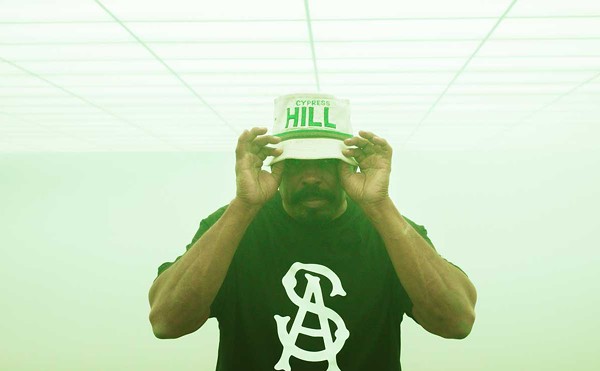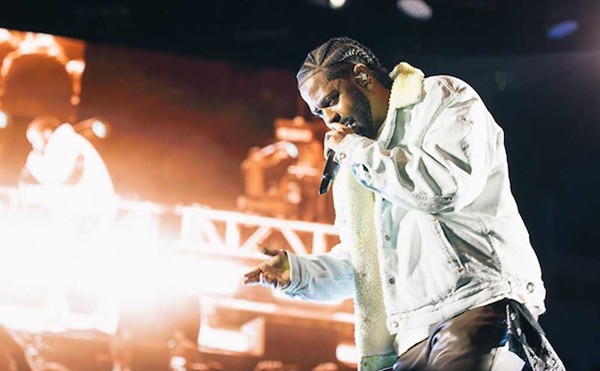The WWE’s Wrestlemania is a brand that lives and breathes
“It’s fake,” that old dismissal of professional wrestling, is still true of Vince McMahon’s WWE. Its wrestlers are outsized characters, the storylines are written with entertainment in mind, and the matches are meticulously choreographed set pieces, right down to that inevitable moment when a bronzed hulk in hot pants pikes off of a turnbuckle to smash his shoulder into the mile-wide and bulging chest of his equally enormous opponent. It’s fake. But so is reality in the context of how we consume it. News bites are strung together with punched-up graphics conveniently added, and everyperson TV competitions are orchestrated by producers in black Armani and headsets. Maybe pro wrestling is just laughable escapism. But if something as nebulous as a brand can build its own cult, and media delivers everything as a storyline anyway, then the WWE is really just offering its own specific set of hooks, twists, villains, and heroes. McMahon’s brands are living, breathing, profusely sweating things, and they never wear shirts.
The sheer brawn of the WWE brand was on display downtown this past Sunday as over 80,000 wrestling fans descended on a sold-out Ford Field for Wresltemania 23. The corporation describes the annual event as “a pop culture spectacular” and “the biggest thing in sports entertainment,” blammo PR phrases that try to define it (and, in relation, all of the WWE) as something much, much larger than a bunch of cartoonish, muscleheaded grappling.
It was.
At first, the actual wrestling ring seemed tiny in comparison to the spectacle. Lighting rigs and sound equipment were suspended at diagonals in Ford Field’s cavernous airspace like a giant hovering erector set, while the facility’s west wall was overtaken by a stories-tall, W-shaped entranceway that integrated lights, lasers, pyrotechnics, jumbo television screens and nonstop sound to become a senses-muting beast that spit out as many branding messages as it did wrestlers. Not that the fans needed much convincing. In addition to their Wrestlemania tickets (the event grossed $5.38 million in ticket sales), most had sprung for merch that pledged allegiance to a particular wrestler, from sloganeering T-shirts to puffy foam (middle) fingers and novelty championship belts. In the concession area, a middle-aged guy sat calmly eating his beef brisket sandwich, being careful not to smudge barbecue sauce on the elaborate magic marker tattoos he’d applied to his face in the style of “Samoan Bulldozer” Umaga.
Umaga was part of Wrestlemania’s biggest storyline (or at least its best chance for record-setting pay-per-view sales), the “battle of the billionaires.” Umaga, the favored of WWE chairman Vince McMahon, would wrestle human battering ram Bobby Lashley, who was the stand-in for Donald Trump in a match to decide which walking ego, er, “billionaire” would have his head shaved. McMahon’s man lost, and the shears and shaving cream came out. But the best part of the match was seeing The Donald actually tackle and (pretend to) punch McMahon. That guy will do anything to promote “The Apprentice".
The card for Wrestlemania 23 also included a championship bout between John Cena and Shawn Michaels, a man mountain match between the 7-foot 3 inch, 430-pound Great Khali and bull-bodied Kane. The Cena-Michaels confrontation also pitted each wrestler’s vocal fan base against the other, and a gauge on the boos and cheers in Ford Field suggested they were evenly matched, at least in terms of following. (Cena eventually pinned Michaels in a match complete with numerous near-3-counts and spilled blood.)
The matches’ outcomes are predetermined. Everyone knows this. But the action is real. One of Wrestlemania 23’s most thrilling segments was an 8-man circus involving ladders of various sizes and an elaborate series of choreographed leaps, crushing put-downs, and signature finishing moves that unfolded as a brute-force ballet, the frenzied crowd hanging on every moment that might mean a victory. It was beautiful in its own way, how the match’s script balanced good and evil, action and reaction, backwards vaults from 15-foot ladders and beefy guys trading punches like drunk cowboys in a silent film. In the end, a loudmouthed, villainous type named Mr. Kennedy came away with the victory. Some fans cheered as he leered at the crowd and his fellow competitors during a backstage interview. Others booed. But the ladder match wasn’t about its resolution so much as its journey. It was about watching these human brands of the WWE fuel their individual cults of personality through feats of strength and agility, and seeing their sweat supported by musical cues and extravagant entrance and exit sequences.
A live, in-person WWE event such as Wrestlemania 23 doesn’t just offer escapism. It offers an escape hatch into an all-consuming alternate reality. Inside is a world where ego and aggression are celebrated, differences break down in black and white, and they’ll always be settled with a show of force. Your wrestler is better if his cheering section is louder, and the energy you’re always searching for in the bottom of a Red Bull can is at the ready and on display in his bulging biceps and twitching veins.
For many of the fans at Wrestlemania, it seemed like their perfect reality. They weren’t flying off the turnbuckle, but they were still helping the spectacle — the brand — live and breathe. Corporations crave that kind of cultish dedication; no wonder professional wrestling is the real deal. Even if it’s still fake.
JTL





